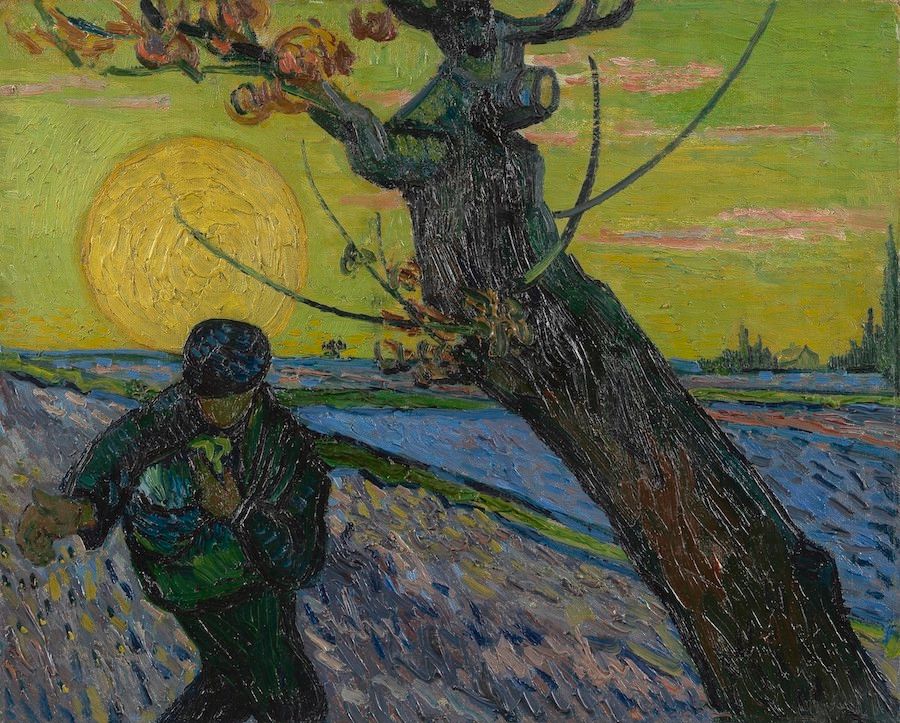If you're like me you're probably familiar with Vincent van Gogh's 1889 "Self-Portrait with Bandaged Ear". But did you ever notice the picture in the background? Yes, that is indeed Mount Fuji.
The exhibition "Van Gogh and Japan" at the Van Gogh Museum in Amsterdam highlights the influence of Japanese art on Van Gogh. The exhibition includes an outstanding selection of works by Van Gogh, many of which are brought together for the first time since the centenary show in 1990, as well as a large collection of Japanese woodblock prints (ukiyo-e) by the likes of Hiroshige and Hokusai.
Van Gogh first discovered Japanese prints in 1885 while working in Antwerp. A year later, after moving to Paris, Van Gogh became infatuated with Japan. He scooped up several hundred Japanese prints at a bargain from a German art dealer, initially with the idea of reselling them. When that didn't work out he held on to them, using them as inspiration for his own work.
At first, Van Gogh just copied the prints in pencil and ink and as oil paintings. The exhibition opens with two such works, hung next to the originals by Hiroshige, "The Residence with Plum Trees" and "Sudden Evening Shower on the Great Bridge near Atake". Eventually, Van Gogh would supersede his examples and incorporate them into his own unique style.
Halfway through the exhibition a multimedia presentation shows the various compositional elements which Van Gogh borrowed from Japanese art:
* Subjects cut-off at the edges of the picture
* A high or absent horizon
* Zooming in on details from nature
* Bright, flat areas of colour
* Bold contour lines
* Prominent diagonals
* A unique way of suggesting space, with emphasis on foreground and background
I leave it to art scholars to decide whether each of these elements are truly unique to Japanese art and whether Van Gogh took them from Japanese art or some other source. After all, artists like Dürer also zoomed in on details from nature and I am sure one can find examples of Western paintings in which the horizon is placed either high or low.

Having first wandered through the exhibition I returned to look more closely with this list in the back of my mind. I now look at paintings like "The Sower" and "Almond Blossom", one of my favourite paintings by Van Gogh, with different eyes.
Van Gogh, of course, never actually visited Japan and his vision of Japan remained an imaginative projection. Like every artist Van Gogh used art history and the work of his contemporaries as a grab bag. This shows in the delightfully irreverent way in which he treated the Japanese prints he acquired. Whereas every serious collector would have framed them Van Gogh just pinned them on a wall, occasionally spilling some paint on them, while working on a new canvas, as can be seen in the room dedicated to Van Gogh's collection of Japanese prints.
After moving to Arles Van Gogh dreamed of establishing an artistic commune. As is well-known his dream was shattered. Seized by a psychosis Van Gogh cut off his own ear. He would never fully recover. Shortly after the event he painted a self-portrait which would become one of his most famous works.
Van Gogh and Japan is at the Van Gogh Museum in Amsterdam until 24 June 2018.